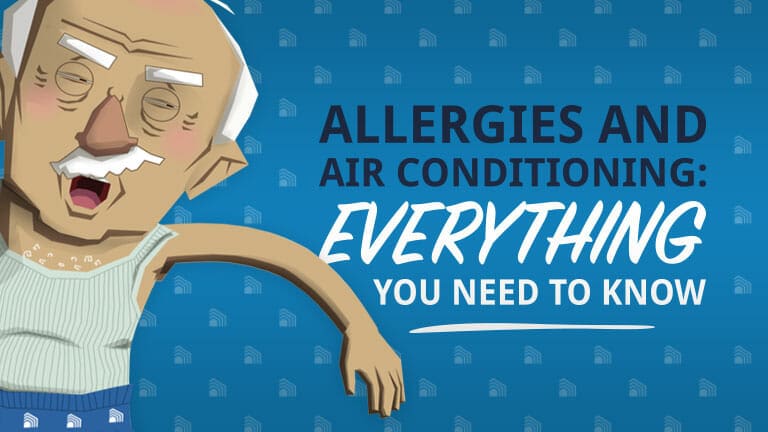
Allergies and Air Conditioning: Everything You Need to know
Allergies can put a damper on even the most beautiful days. For many people, recurring allergies can cause sneezing, coughing and even serious breathing issues. It’s not uncommon for people to suffer from allergies due to pollen in spring months.
Did you know indoor air quality can be one of the biggest causes of allergy symptoms?
In your home, there are many different types of allergens that can trigger your symptoms. Exposure to these allergens can create a range of short-term and long-term health issues. American Academy of Allergy Asthma and Immunology lists these four common types of indoor allergens:
- Dust mites
- Pet dander
- Cockroach allergens
- Indoor molds
Aside from these common allergy triggers, there are many other types that may exist in your home (don’t forget the pollen that sneaks in from outdoors!). Luckily, allergy symptoms from indoor air can be drastically reduced and even eliminated by practicing routine maintenance on your air conditioning system.
How Do Air Conditioning Systems Spread Allergens?
A well-maintained heating and air conditioning system will prevent allergens from circulating in your home and will help to keep your symptoms at bay. Meanwhile, a system that goes unmaintained will circulate indoor allergens into your air ducts and throughout your household, triggering symptoms in the eyes, ears, nose and throat.
How Do You Prevent Allergens from Affecting Your Air Conditioning System?
Your system’s first line of defense is its air filter. An air filter is intended to keep harmful dust, dirt, pet dander and other indoor allergens from entering your air ducts. Regularly replacing your air filter as recommended will help to keep these allergens out.
Purchasing high-efficiency air filters will collect more allergens before they enter your system and will last longer, requiring less frequent replacements. Make sure to check how often you need to replace your air filter, as some need to be changed as often as once per month.
Replacing your air filter is a key step, but there are many proactive measures you can take to lessen the amount of harmful pollutants that reach your air conditioner:
- Vacuum your carpets and furniture regularly to eliminate allergens such as pet dander, dust and loose particles
- Wipe down countertops, appliances and any items in your home that collect dust and other allergens
- Prevent small bugs such as cockroaches from entering the home by never leaving food out Keep windows and doors shut to avoid external allergens from entering your home
What Happens When Your Air Ducts Become Filled With Allergens?
Unfortunately, cleaning your home and replacing your heating and air conditioning systems filter will do little to prevent allergy symptoms once your air ducts have become polluted with pet dander, dust, mold or pests. When this occurs, you should have your air ducts cleaned by an HVAC maintenance professional. A trained HVAC specialist will be able to clean all of your ductwork, reducing the spread of harmful allergens and your constant exposure to them.
Remember, prolonged exposure to dangerous allergens can cause damage to your systems, reduce air quality and comfort and in more severe cases, cause respiratory illness. Prevent these problems early on by taking proactive steps, both as you do your spring cleaning and throughout the year.
Safeguard your home by staying up-to-date on routine maintenance. And remember, if your allergies begin to flare up in your home, you are probably already experiencing reduced air quality. Consider seeking professional help to improve your home’s indoor air quality.
